Irvine, CA Pollen and Allergy Report for Summer 2023
Pollen Allergy Trends in Irvine, CA
When is pollen lowest in Irvine, CA?

February
Lowest month total PPM
Avg. PPM
When is pollen highest in Irvine, CA?

January
Highest month total PPM
Avg. PPM
How does pollen in Irvine, CA compare to California?
Irvine has a lower average PPM than the state of California.
Irvine yearly avg PPM:
California yearly avg PPM:
How does pollen in Irvine, CA compare to the USA?
Irvine has a lower average PPM than the USA.
Irvine yearly avg PPM:
USA yearly avg PPM:
Is pollen worse this year in Irvine, CA?
Spring 2023 was worse than spring 2022.
Spring 2023 PPM:
Spring 2022 PPM:
Average PPM in Irvine, CA
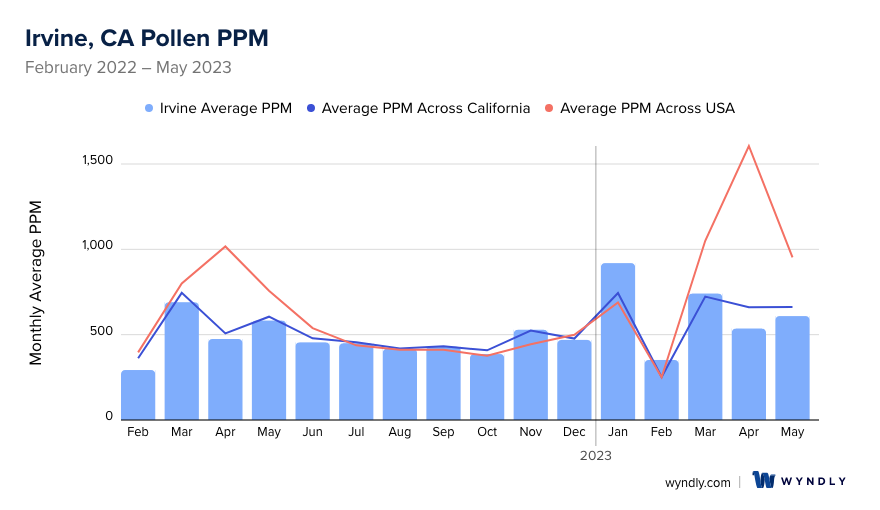
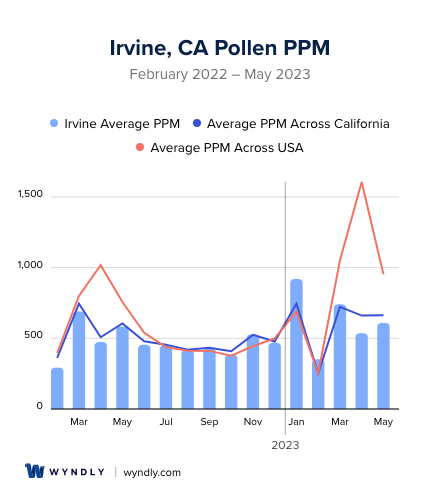
Irvine, CA Pollen and Allergy Breakdown by Month
Grass
When is grass pollen highest in Irvine, CA?
May has the highest grass pollen in Irvine, CA with an average PPM of
When is grass pollen lowest in Irvine, CA?
December has the lowest grass pollen in Irvine, CA with an average PPM of
Tree
When is tree pollen highest in Irvine, CA?
March has the highest tree pollen in Irvine, CA with an average PPM of
When is tree pollen lowest in Irvine, CA?
August has the lowest tree pollen in Irvine, CA with an average PPM of
Weed
When is weed pollen highest in Irvine, CA?
November has the highest weed pollen in Irvine, CA with an average PPM of
When is weed pollen lowest in Irvine, CA?
February has the lowest weed pollen in Irvine, CA with an average PPM of
Irvine, CA Pollen Monthly Breakdown by Pollen Type
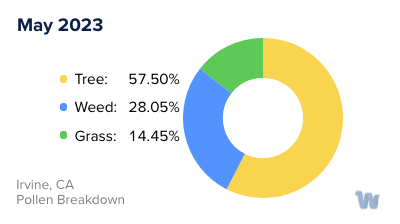
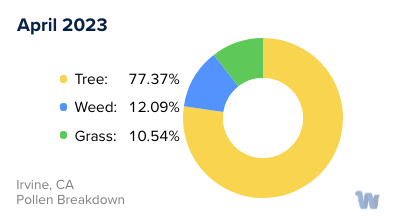
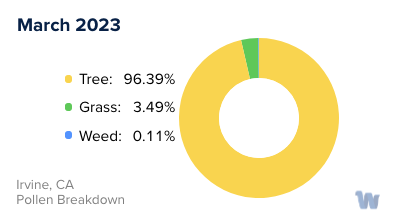
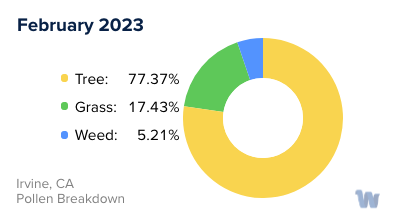
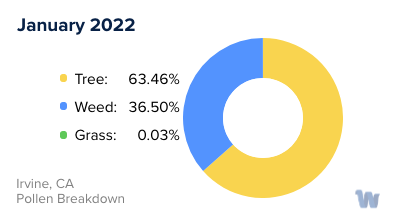
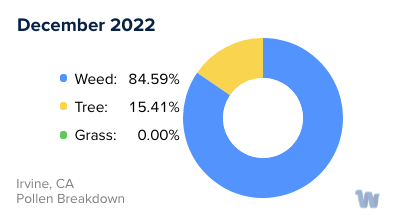
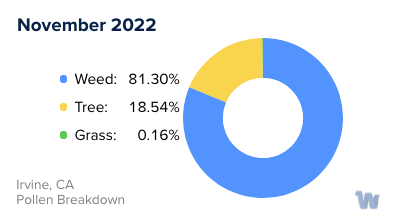
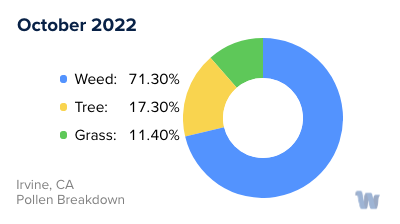
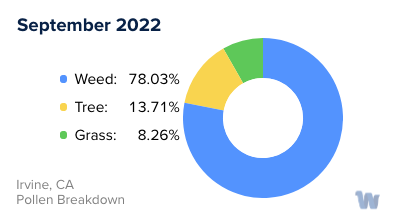
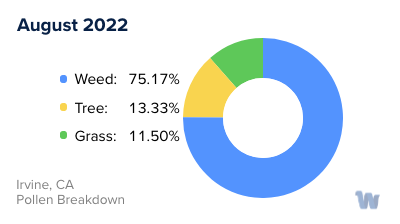
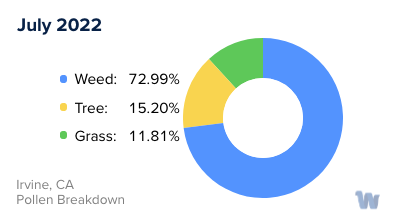
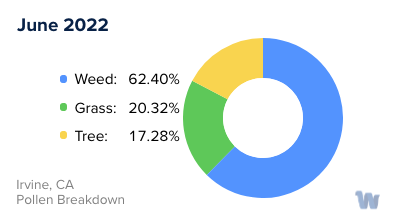
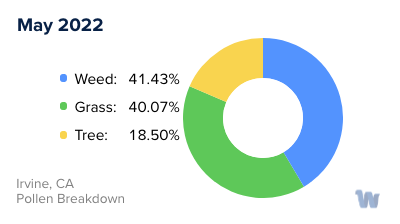
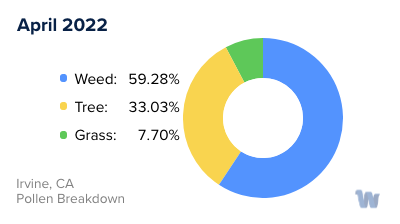
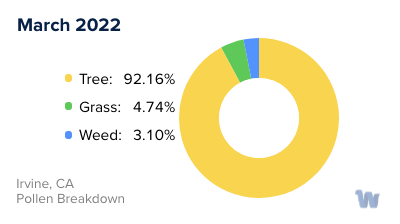
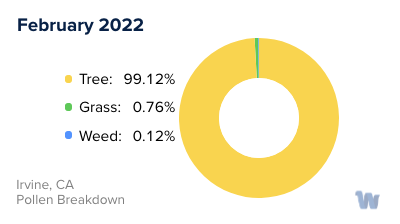
Pollen and Hay Fever in Irvine, CA
Pollen allergies, commonly known as hay fever, are a significant health concern for many residents of Irvine, California. The city's rich biodiversity, combined with its Mediterranean climate, makes it a hotspot for various types of pollen, each peaking in different seasons, which can trigger allergic reactions in susceptible individuals.
During the spring season, Irvine's beautiful trees are in full bloom, releasing copious amounts of tree pollen into the air. Oak, pine, and cedar are among the most prevalent tree species in the region, each contributing significantly to the pollen count. People who are sensitive to these types of pollen may find this season particularly challenging, as these trees generously distribute their microscopic particles to fertilize other plants, but inadvertently end up causing sneezing, itchy eyes, and runny noses in many of our neighbors.
As the calendar turns to summer, grasses take center stage in the pollen production. Timothy grass, ryegrass, and Bermuda grass are common in Irvine and surrounding areas, each releasing their pollen mainly in the warmer months. For those with sensitivities, this can make summer picnics and outdoor activities less enjoyable due to the grass pollen in the air.
Autumn brings a shift from tree and grass pollen to weed pollen, with species like ragweed, sagebrush, and lamb's quarters dominating the scene. Their pollen grains, known for their potency, can travel great distances and are a common cause of hay fever symptoms in the fall.
Finally, in the mild winters of Irvine, outdoor molds release their spores, which behave similarly to pollen and can cause similar allergic reactions. While not strictly pollen, they are worth noting as part of the annual cycle of allergens in our city.
Understanding the types of pollen and their peak seasons in Irvine can help those with allergies anticipate and prepare for potential triggers. Though it may seem like there's always something in the air, knowing what and when can provide some comfort - knowledge, after all, is the first step to managing our health.

